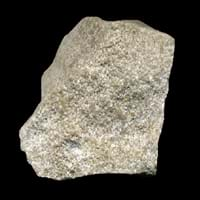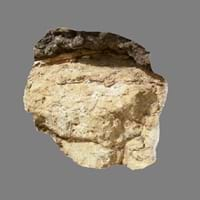Definition
Oolite is a sedimentary rock formed from ooids, spherical grains which are composed of concentric layers of calcite
Laterite rock is a type of Sedimentary rock which is rich in iron and aluminium, formed in hot and wet tropical areas
Discoverer
Unknown
Francis Buchanan-Hamilton
Etymology
From oo- + -lite, after German Oolit. A rock consisting of fine grains of carbonate of lime
From Latin later brick, tile + -ite1
Class
Sedimentary Rocks
Sedimentary Rocks
Sub-Class
Durable Rock, Medium Hardness Rock
Durable Rock, Soft Rock
Group
Volcanic
Not Applicable
Other Categories
Fine Grained Rock, Opaque Rock
Fine Grained Rock, Opaque Rock
Texture
Clastic or Non-Clastic
Earthy, Massive, Porphyritic
Color
Black, Blue, Brown, Cream, Green, Grey, Pink, Red, Silver, White, Yellow
Brown, Buff, Red
Durability
Durable
Durable
Appearance
Rounded and Rough
Rough and Banded
Interior Uses
Decorative Aggregates, Flooring, Interior Decoration
Decorative Aggregates, Flooring, Interior Decoration
Exterior Uses
As Building Stone, As Facing Stone, Garden Decoration, Paving Stone
As Building Stone, As Facing Stone, Garden Decoration
Other Architectural Uses
Not Yet Used
Curbing
Construction Industry
Cement Manufacture, Cobblestones, Landscaping
Cobblestones, for Road Aggregate, Landscaping, Roadstone
Medical Industry
Not Yet Used
Not Yet Used
Antiquity Uses
Artifacts
Artifacts, Monuments, Sculpture
Commercial Uses
Creating Artwork, Jewelry, Used in aquariums
An Oil and Gas Reservoir, Source of bauxite, Used in aquariums
Types
Not Available
Not Available
Features
Available in lots of colors, Generally rough to touch, Very fine grained rock
Is one of the oldest rock, Very fine grained rock
Archaeological Significance
Monuments
Not Yet Used
Used
Famous Monuments
Not Applicable
Data Not Available
Sculpture
Not Yet Used
Used
Famous Sculptures
Not Applicable
Data Not Available
Figurines
Not Yet Used
Used
Formation
Oolites form when layers of calcite are deposited around a sand grain or fossil piece and are rolled around in calm water, which makes them round.
Laterite is a type of sedimentary rock which is generally a reddish weathering product of basalt.
Mineral Content
Calcite, Chert, Clay, Dolomite, Quartz, Sand, Silt
Aluminum Oxides, Biotite, Hematite, Hornblade, Iron Oxides, Manganese Oxides, Micas, Muscovite or Illite, Plagioclase, Pyroxene
Compound Content
Aluminium Oxide, Ca, NaCl, CaO, Iron(III) Oxide, FeO, MgO
Aluminium Oxide, CaO, Iron(III) Oxide, FeO, Potassium Oxide, MgO, MnO, Sodium Oxide, Phosphorus Pentoxide, Silicon Dioxide, Titanium Dioxide
Types of Metamorphism
Not Applicable
Not Applicable
Types of Weathering
Biological Weathering, Chemical Weathering, Mechanical Weathering
Biological Weathering, Chemical Weathering
Types of Erosion
Chemical Erosion, Coastal Erosion
Chemical Erosion, Water Erosion, Wind Erosion
Grain Size
Fine Grained
Fine Grained
Fracture
Conchoidal
Conchoidal
Porosity
Less Porous
Highly Porous
Luster
Pearly to Shiny
Dull
Cleavage
Non-Existent
Not Applicable
Toughness
1
Not Available
Specific Gravity
Not Available
Not Available
Transparency
Opaque
Opaque
Density
Not Available
Not Available
Resistance
Heat Resistant, Wear Resistant
Heat Resistant, Pressure Resistant
Deposits in Eastern Continents
Asia
Brunei, India, Indonesia, Malaysia, Singapore, Thailand, Vietnam
India
Africa
Cameroon, Chad, Ghana, Kenya, Malawi, Sudan, Tanzania, Togo, Zambia, Zimbabwe
East Africa, Western Africa
Europe
United Kingdom
England, Romania, Scotland
Others
Not Yet Found
Not Yet Found
Deposits in Western Continents
North America
USA
Canada, USA
South America
Colombia
Not Yet Found
Deposits in Oceania Continent
Australia
Adelaide, New Zealand, Queensland, Tonga, Victoria, Yorke Peninsula
Central Australia, Western Australia
All about Oolite and Laterite Properties
Know all about Oolite and Laterite properties here. All properties of rocks are important as they define the type of rock and its application. Oolite and Laterite belong to Sedimentary Rocks.Texture of Oolite is Clastic or Non-Clastic whereas that of Laterite is Earthy, Massive, Porphyritic. Oolite appears Rounded and Rough and Laterite appears Rough and Banded. The luster of Oolite is pearly to shiny while that of Laterite is dull. Oolite is available in black, blue, brown, cream, green, grey, pink, red, silver, white, yellow colors whereas Laterite is available in brown, buff, red colors. The commercial uses of Oolite are creating artwork, jewelry, used in aquariums and that of Laterite are an oil and gas reservoir, source of bauxite, used in aquariums.










